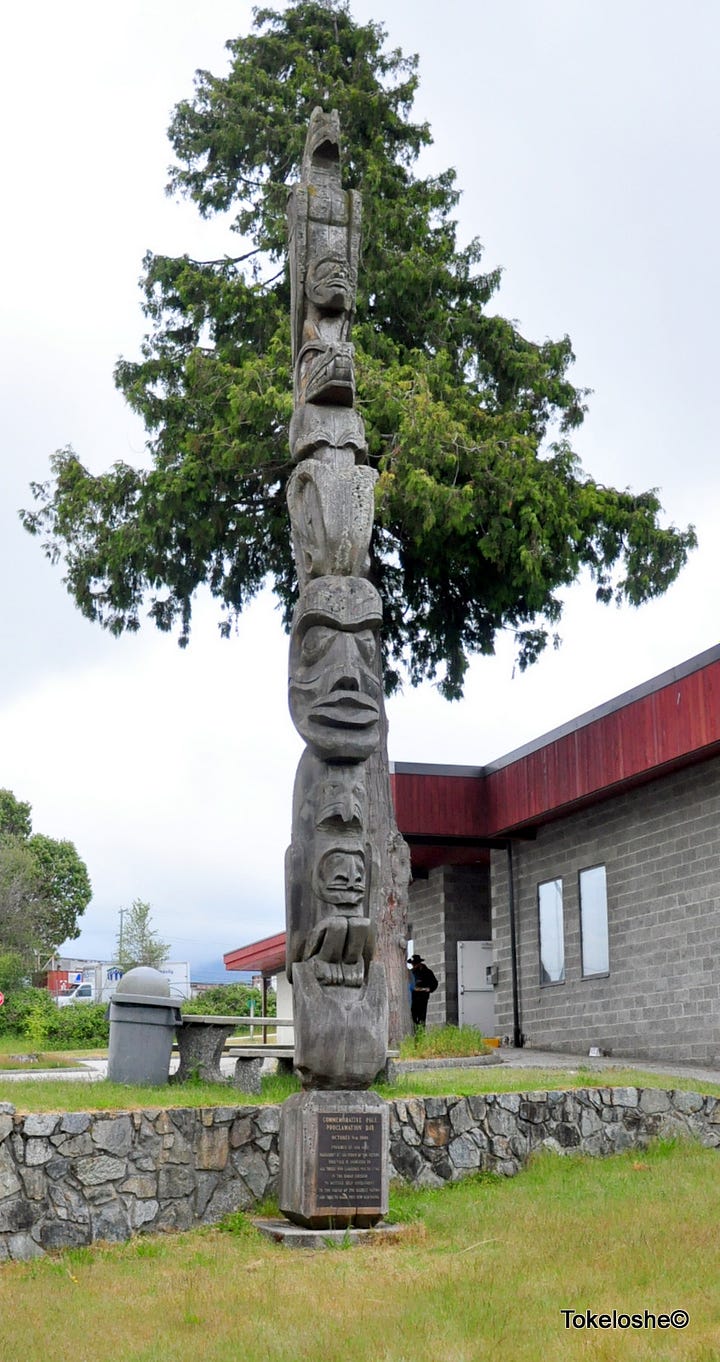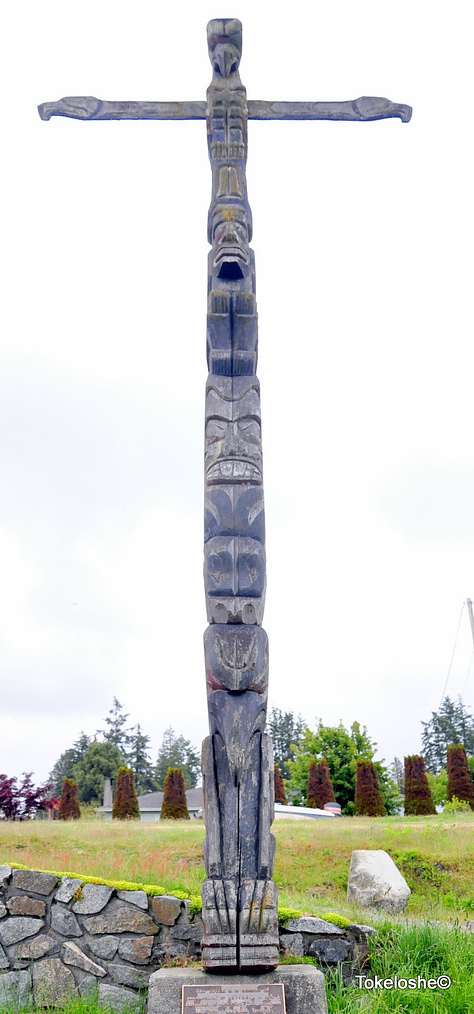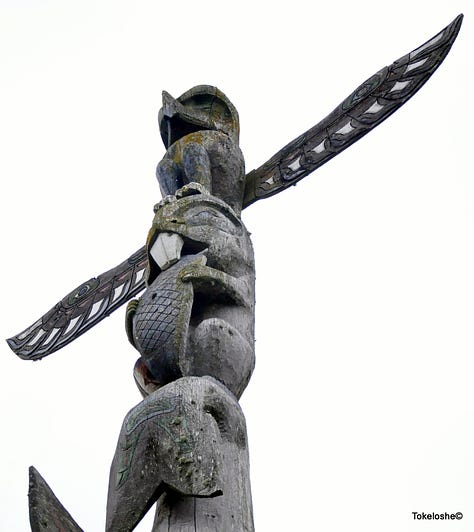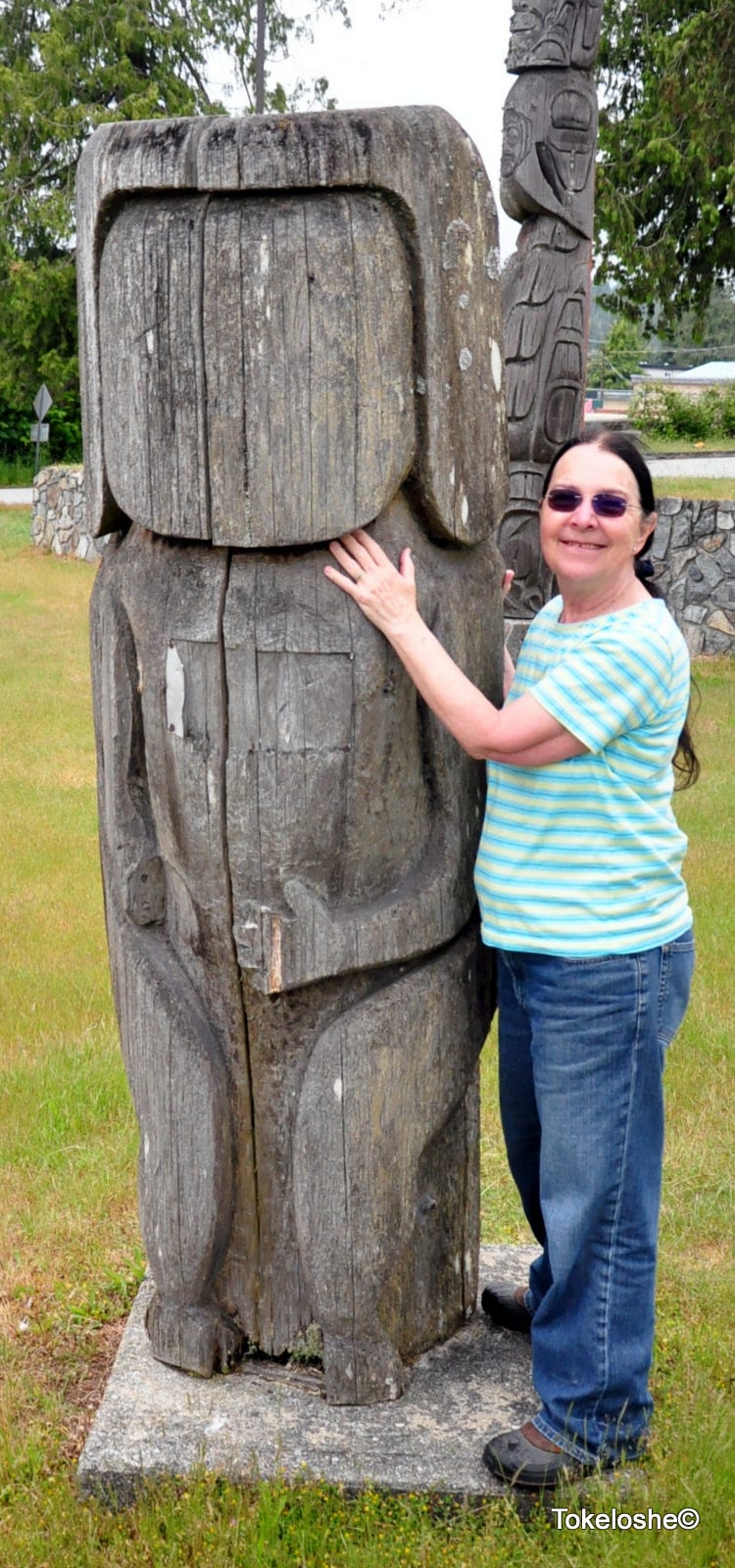While camping at Robert's Creek, we visited Sechelt on the Sunshine Coast, British Columbia, Canada. It was a cool and rainy day.
"A totem pole or monumental pole is a tall structure created by Northwest Coast Indigenous peoples that showcases a nation’s, family’s or individual’s history and displays their rights to certain territories, songs, dances and other aspects of their culture. Totem poles can also be used as memorials and to tell stories. Carved of large, straight red cedar and painted vibrant colours, the totem pole is representative of both coastal Indigenous culture and Northwest Coast Indigenous Art." - The Canadian Encyclopedia
“Totems poles are unique to the Northwest Coast of BC and Lower Alaska and were used by the First Peoples to record their history and preserve their legends. They were not idols nor used in worship. Each pole had a story to tell and the stories were respective of the families which owned the Totem. For most, we can only surmise their individual meanings.”- Woodworker’s Guide
"Sechelt (ch’atlich) is located on the traditional territory of the shíshálh (Sechelt) Nation. It’s the name of a people, a community, a peninsula, and an inlet. The community of approximately 10,847 people sits on a narrow isthmus that separates the Sechelt Inlet from the Salish Sea. To get to Sechelt, you must take a 40-minute ferry ride from Horseshoe Bay to Langdale (and either drive, bike, or take transit along Highway 101 for the remainder of the way), travel via float plane, or navigate by boat." - Sunshine Coast




Click on the thumbnails.
"The Shishalh tribe settled the Sechelt area thousands of years ago, taking advantage of its ideal location between Sechelt Inlet (providing access to Jervis Inlet) to the north, and the Strait of Georgia to the south. The first Europeans moved here in 1862 when Catholic priests arrived to set up a mission. By the 1880s, Sechelt had become an active centre for the logging and fishing industries, with the construction of sawmills and wharves. - Travel British Columbia









Click on the thumbnails.
" Twelve Coast Salish totem poles, Sechelt. “Named after the original First Nations people of the region, the shishalh.” “Sechelt is a small community sitting on a sandbar, the narrow Sechelt isthmus separating Sechelt Inlet from the Strait of Georgia.” “The word “Sechelt” means land between two waters. Indian Legend has it that the creator gods were sent by the Divine Spirit to form the world. They carved out valleys leaving a beach along the inlet at Porpoise Bay. Later, the transformers, a male raven and a female mink, changed details by carving trees and forming pools of water. The raven is an integral part of the Sechelt Indian Band’s culture and is often seen in their carvings.’” “Twelve Coast Salish totem poles look out over Trail Bay – they recount the history of the Sechelt Indian Band, the first in Canada to gain self-government in 1986.“ – British Columbia
Twelve Coast Salish totems look out over Trail Bay, at Sechelt on the Sunshine Coast. These totem poles recount the history of the Sechelt Nation, the first band in Canada to achieve self-government.












